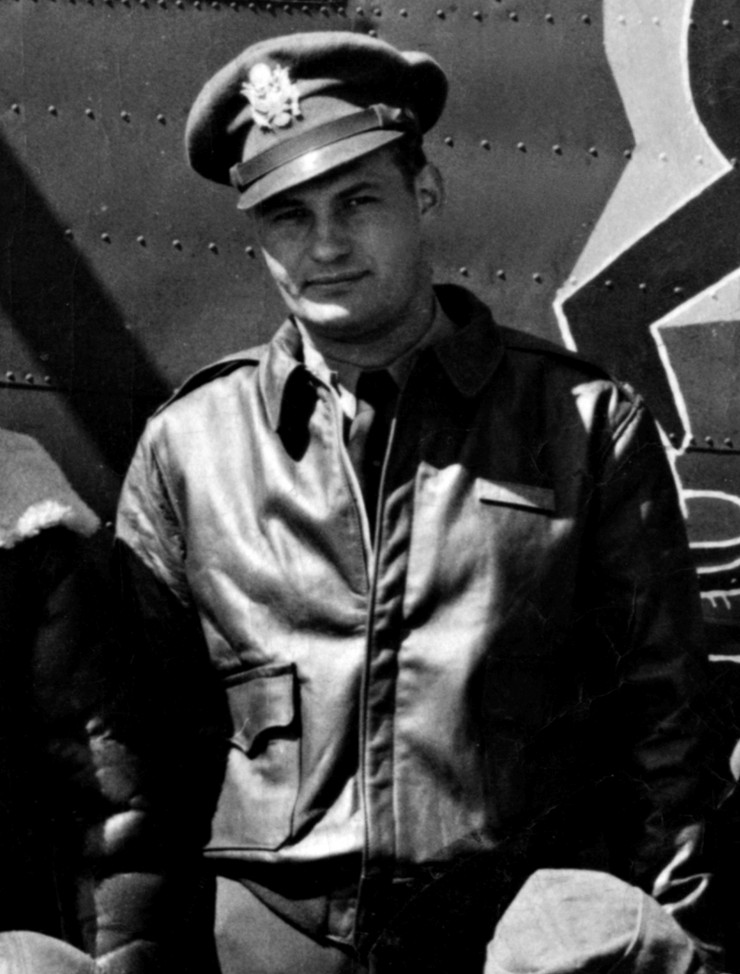Victor Stephen Kramer was born at Manhattan, New York City, New York on January 12, 1918. He was probably an only child. His parents were Viktor J. Kramer (17 Dec 1891 Apr 1978), who immigrated from Romania in 1907; and Frances 'Fanny' (Glaser) Kramer (1896 Jun 1947), who immigrated from Hungary about 1911. His parents married at New York City on April 29, 1917. In 1930 the family lived at 144 West 98th Street, Manhattan, New York, and his father worked as a chauffeur for a private family.
He graduated from DeWitt Clinton High School in The Bronx, New York, where he played football. He went on to graduate from New York University at Greenwich Village in Lower Manhattan. He is listed in the April 1940 United States Census as one of nine teachers in the household of Reverend George P. Mayo, the Superintendent of Blue Ridge Industrial School at Saint George, Greene County, Virginia (near Charlottesville). He later taught algebra and coached football at New York Military Academy, Cornwall-on-Hudson, New York.
He registered for the draft at New York City on October 16, 1940. He was 6 feet tall, weighed 180 pounds, and had brown eyes and brown hair. At that time he lived with his parents at 209 West 97th Street in Manhattan, and was a student at New York University. He enlisted in the U.S. Army Air Corps at New York City, New York on August 18, 1942, and was called to active duty in March 1943. His home of record was his father's address at 49-15 Skillman Avenue, Woodside, Queens County, New York. He was engaged to be married to Maria Kappes of 51-04 Skillman Avenue, Woodside, New York.
He completed Army Air Forces navigation training in Class 43-17 at Selman Field in Monroe, Louisiana, and was commissioned a Second Lieutenant on December 24, 1943. He was then assigned as navigator on the heavy bomber crew of Lt Doyle E. Simons in the 838th Bomb Squadron of the 487th Bomb Group. The Simons crew completed B-24 crew training with the 487th Bomb Group at Alamogordo Army Air Base, New Mexico, and deployed with the Group to England in March 1944. They flew B-24H 41-29479 'The Big Bad Wolf' from Alamogordo, New Mexico to Lavenham, England via the southern Atlantic ferry routea journey of about 10,000 milesand arrived at Lavenham by mid-April 1944.
The 487th Bomb Group was based at Army Air Forces Station 137 near Lavenham, Suffolk, England, and was part of the 8th U.S. Army Air Force in Europe. After the Group arrived in England, Lt Simons was grounded with appendicitis, and was replaced as First Pilot by 2/Lt Lorin D. McCleary Jr.
On May 11, 1944, the McCleary crew took off from Lavenham in B-24H 42-52444 on a mission to bomb the railroad marshalling yards at Chaumont, France. The secondary target was Troyes. The 487th Bomb Group formation never reached the target. Navigational error resulted in the formation flying over accurate German flak guns guarding the airfield at Chateaudun, France. Lt Kramer and eight of his crewmates were killed in action when their aircraft was shot down by flak over Chateaudun. 2/Lt J. Wray Lacy, navigator on the Olen F. Huff crew, was flying with Huff in B-24 41-29525 off McCleary's right wing when McCleary's aircraft was hit. Lt Lacy had known Lt Kramer since navigation training at Selman Field. He said: "I could see Kramer through my window in the nose. After the first two planes were shot down, his plane was off our left wing. I could see him looking through the navigator's window of his plane when it was hit."
The aircraft took a direct flak hit in the nose and flight deck and started burning at the engines. It went into a dive, exploded in the air, and crashed three kilometers east of Varize near Bazoches-en-Dunois. One man, Staff Sergeant Harold E. Owens, survived. He wrote: "At approximately 1145 we were hit by flak in the nose, which resulted in the death of Lt Victor Kramer, navigator, Sgt Paul Churm, top turret gunner, and S/Sgt Eugene McKee, radio operator. The plane immediately burst into flames, we were flying at an altitude of approximately 11,000 feet, a few seconds later the plane started into a dive, and exploded in mid air, with the result that I was blown clear of the plane. I managed to pull my ripcord and landed eight miles north of Chateaudun, France. I made a safe landing and at a distance of one quarter of a mile I saw the plane completely wrecked and on fire. I was the only member of the crew who parachuted to safety. I did not go near the plane because I knew the bombs had not exploded. I hid in the woods and about five minutes later the bombs exploded."
The dead were recovered by German troops, who buried them at the Grand Cimetiθre in Orleans, France. Lt Kramer's remains were returned to the United States and reinterred at Saint John Cemetery in Middle Village, Queens County, New York, on April 14, 1949.
B-24H 42-52444 crew:
McCleary, Lorin D 2/Lt Pilot KIA
McCoy, Ernest E 2/Lt Copilot KIA
Kramer, Victor S 2/Lt Navigator KIA
Perry, Joseph D 2/Lt Bombardier KIA
Owens, Harold E S/Sgt Engineer POW
McKee, Eugene S/Sgt Radio Operator KIA
Frey, Arthur C Sgt Nose Turret KIA
Churm, Paul K Sgt Top Turret KIA
Barboza, Clemente M Sgt Ball Turret KIA
Knapp, Dale L Sgt Tail Turret KIA
Source of information: Paul M. Webber, www.findagrave.com

